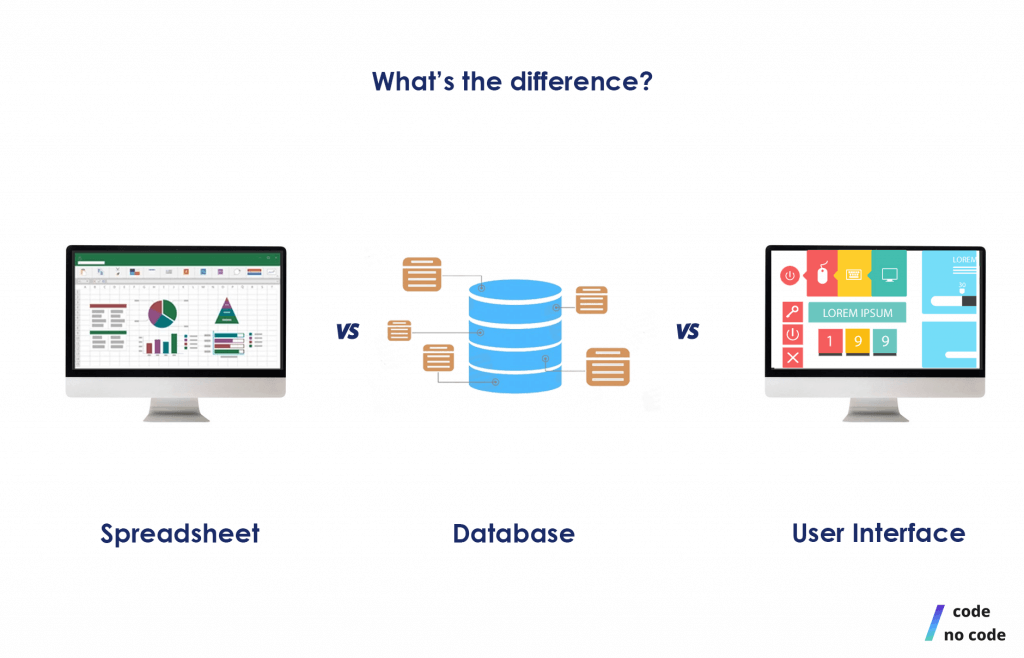Produce Open System Databases Easily with the very best No-Code Devices Available
Produce Open System Databases Easily with the very best No-Code Devices Available
Blog Article
A Comprehensive Guide to Carrying Out Scalable Databases Without the Requirement for Coding Proficiency
In the contemporary landscape of information management, the ability to apply scalable databases without coding knowledge is becoming increasingly essential for organizations of all dimensions. This guide intends to illuminate the procedure, concentrating on straightforward tools and instinctive interfaces that debunk data source configuration. By checking out key attributes, reliable strategies for execution, and finest techniques for continuous administration, we will certainly deal with just how even non-technical individuals can confidently browse this complex surface. What are the crucial components that can really equip these individuals to leverage scalable data sources successfully? The answers might redefine your method to data administration.
Recognizing Scalable Data Sources
In the world of modern information administration, scalable data sources have actually emerged as an important solution for companies looking for to take care of raising volumes of information effectively. These data sources are made to fit growth by permitting the seamless addition of resources, whether through horizontal scaling (adding more makers) or vertical scaling (upgrading existing devices) This flexibility is vital in today's hectic electronic landscape, where data is generated at an unprecedented rate.
Scalable data sources usually utilize distributed styles, which enable information to be spread throughout several nodes. This distribution not only boosts performance yet likewise gives redundancy, ensuring information accessibility also in case of hardware failings. Scalability can be a crucial factor for different applications, including shopping platforms, social media networks, and big information analytics, where user need can vary significantly.
In addition, scalable data sources usually include robust information consistency designs that stabilize efficiency and integrity. Organizations should consider their certain requirements, such as read and create rates, information stability, and mistake resistance when selecting a scalable database service. Ultimately, recognizing the underlying concepts of scalable databases is important for organizations intending to flourish in a progressively data-driven world.
Trick Functions to Try To Find
When evaluating scalable databases, several key functions are paramount to making certain optimal efficiency and integrity. First and primary, think about the design of the data source. A dispersed design can improve scalability by enabling information to be stored across several nodes, assisting in smooth data gain access to and handling as demand boosts.
One more crucial attribute is information partitioning, which makes it possible for efficient management of huge datasets by splitting them into smaller, a lot more manageable items (no-code). This approach not just enhances performance however additionally streamlines resource allocation
In addition, look for durable duplication abilities. This attribute guarantees data redundancy and high accessibility, decreasing downtime during upkeep or unforeseen failures.
Performance tracking tools are likewise essential, as they give real-time understandings right into system wellness and functional performance, permitting prompt adjustments to preserve optimum efficiency.

User-Friendly Database Equipment
Simplicity is an important aspect in the design of easy to use database devices, as it improves access for individuals with differing degrees of technological proficiency. no-code. These devices focus on instinctive interfaces, allowing customers to develop, handle, and question databases without needing considerable programs understanding
Trick features usually include drag-and-drop capability, aesthetic information modeling, and pre-built layouts that enhance the setup procedure. Such tools frequently provide assisted tutorials or onboarding processes that help with customer engagement and decrease the understanding curve. Additionally, seamless integration with preferred data resources and services ensures that individuals can easily import and export information, additionally streamlining procedures.

Additionally, robust assistance and neighborhood sources, such as discussion forums and documents, improve the individual experience by giving help when required. In general, straightforward database tools empower organizations to harness the power of scalable databases, making data administration easily accessible to everybody entailed.
Step-by-Step Implementation Guide
Just how can organizations properly carry out scalable data sources to meet their expanding information requirements? The procedure begins with recognizing particular information demands, consisting of the quantity, selection, and velocity of data that will certainly be refined. Next, companies ought to assess easy to page use database devices that offer scalability functions, such as cloud-based options or managed data source services.
Once the ideal tool is picked, the following step involves setting up the data source environment. This includes establishing up circumstances, specifying customer approvals, and establishing information frameworks that align with business goals. Organizations needs to then move existing data right into the brand-new system, guaranteeing information honesty and minimal interruption to procedures.
Post-migration, conducting comprehensive testing is essential; this includes performance screening under numerous tons conditions to make sure the system can handle future growth - no-code. Additionally, it is very important to educate staff on the data source management user interface to facilitate seamless usage
Finest Practices for Administration
Reliable monitoring of scalable databases calls for a tactical strategy that prioritizes continuous monitoring and optimization. To achieve this, companies should carry out robust monitoring tools that give real-time understandings right into data source efficiency metrics, such as question response times, resource application, and purchase throughput. On a regular basis examining these metrics can aid determine traffic jams and locations for renovation.

Routine back-ups and catastrophe recuperation strategies are necessary to secure data honesty and accessibility. Developing a routine for checking these back-ups will make certain a reliable recuperation process in case of an unforeseen failing.
Furthermore, performance tuning should be a continuous procedure. Readjusting indexing strategies, maximizing queries, and scaling resourcesâEUR" whether vertically or horizontallyâEUR" will certainly aid maintain optimal efficiency as usage demands develop.
Finally, promoting a culture of understanding sharing amongst staff member will make it possible for continual discovering and adaptation, guaranteeing that the management of scalable data sources continues to be effective and reliable gradually.
Verdict
Finally, the execution of scalable data sources can be properly attained without coding know-how with the utilization of straightforward tools and instinctive user interfaces. By adhering to the described techniques for arrangement, data movement, navigate to these guys and performance screening, people can browse the intricacies of database management with simplicity. Highlighting finest techniques for recurring upkeep and collaboration additional boosts the capacity to take care of scalable databases effectively in a swiftly progressing data-driven environment.
In the contemporary landscape of information administration, the ability to execute scalable data sources without coding competence is becoming significantly crucial for companies of all sizes.In the world of modern data monitoring, scalable databases have actually emerged as a crucial service for companies looking for to handle increasing volumes of information successfully.In addition, scalable data sources typically feature robust data uniformity versions that stabilize efficiency and dependability.How can organizations successfully carry out scalable data sources to meet their expanding information demands? Next off, companies need to evaluate easy to use database tools that offer scalability attributes, such as cloud-based services or took care of database solutions.
Report this page